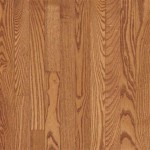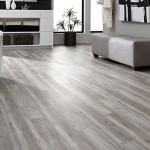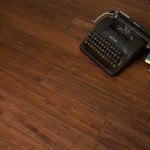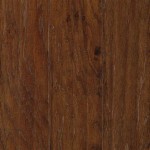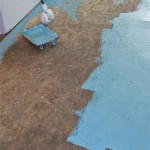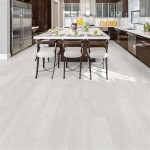Floating Wood Floor Over Concrete: Essential Considerations
Transforming your concrete subfloor into a warm and inviting space can be achieved effortlessly with floating wood flooring. However, to ensure a successful installation and long-lasting results, it is crucial to comprehend the fundamental aspects involved.
Moisture Control
Concrete subfloors are notorious for moisture issues. Excess moisture can warp and buckle the flooring, compromising its integrity. To prevent this, a moisture barrier is essential. This thin layer of polyethylene film acts as a buffer, blocking moisture from reaching the flooring.
Underlayment
Underlayment serves multiple purposes. It provides cushioning, reducing noise and enhancing comfort underfoot. Additionally, it helps distribute weight evenly, improving the floor's stability and durability.
Expansion Gap
Wood naturally expands and contracts with changes in temperature and humidity. To accommodate this movement, an expansion gap must be maintained around the perimeter of the room. This gap allows the flooring to move freely without buckling or warping.
Planking Direction
The orientation of the planks can significantly impact the overall look and feel of the room. Installing planks parallel to the longest wall creates a sense of spaciousness, while perpendicular installation visually shortens the room. Consider the room's dimensions and personal preferences when determining the plank direction.
Acclimation
Prior to installation, the wood flooring should be acclimated to the room's temperature and humidity for several days. This process ensures that the flooring has reached equilibrium with the environment, minimizing potential expansion or contraction issues.
Installation Technique
Floating wood flooring is installed without adhering it directly to the subfloor. Instead, it "floats" on an underlayment and is held together by its interlocking edges. Proper installation techniques, such as tapping planks together with a tapping block and using staggered joints, are essential for a sturdy and durable floor.
Maintenance
Routine maintenance is key to preserving the beauty and longevity of floating wood flooring. Regular sweeping, vacuuming, and occasional damp mopping with a wood floor cleaner will keep the floor looking its best. Avoid using harsh chemicals or excessive water, as these can damage the finish.
Conclusion
By carefully considering these essential aspects, you can create a stunning and durable floating wood floor over a concrete subfloor. Remember to prioritize moisture control, use appropriate underlayment, allow for expansion gaps, choose the right planking direction, acclimate the flooring properly, install it professionally, and maintain it regularly. With a bit of planning and attention to detail, you can enjoy the warmth and beauty of wood flooring for many years to come.

Installing Wood Flooring Over Concrete Diy

Q A Solid Wood Floors Over Concrete Slabs Jlc

Ask Fred How Do I Install Wood Floor Below Grade Schedule

Result For Floating Floorboard On Concrete Slab Detail Types Of Wood Flooring Floors

Floating Wood Floors Over Concrete Expert Guide For Northwest Ga Homes

Floating A Floor Over Concrete Slab Concord Carpenter

How To Install A Wood Subfloor Over Concrete Rona

Installing Hardwood Floors On Concrete Subfloors

Ask Fred How Do I Install Wood Floor Below Grade Schedule

Fitting Hardwood Floor To Concrete Wood And Beyond Blog
Related Posts

